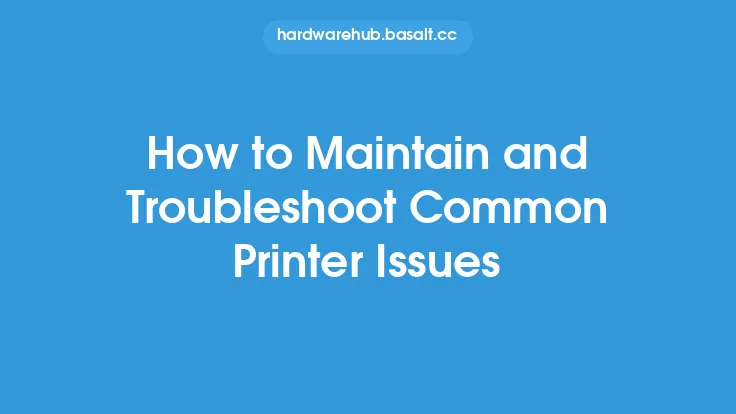Identifying and fixing common motherboard issues can be a daunting task, especially for those who are new to computer hardware. The motherboard is the main circuit board of a computer, connecting all the hardware components together, and any issues with it can cause a range of problems, from minor glitches to complete system failure. In this article, we will explore the common motherboard issues, their symptoms, and the steps to diagnose and fix them.
Understanding Motherboard Components
To identify and fix motherboard issues, it's essential to understand the different components that make up the motherboard. These include the CPU socket, chipset, RAM slots, expansion slots, and input/output ports. Each component plays a critical role in the functioning of the motherboard, and any issues with them can cause problems. For example, a faulty CPU socket can prevent the CPU from functioning correctly, while a damaged RAM slot can cause memory errors.
Common Motherboard Issues
There are several common motherboard issues that can cause problems with a computer. These include:
- Overheating: Motherboards can overheat due to dust buildup, faulty cooling systems, or excessive power consumption. Symptoms of overheating include system crashes, slow performance, and burn marks on the motherboard.
- Power issues: Power issues can cause a range of problems, including system shutdowns, boot failures, and damage to components. Symptoms of power issues include burning smells, sparks, and blown fuses.
- Component failure: Component failure can occur due to wear and tear, physical damage, or manufacturing defects. Symptoms of component failure include system crashes, error messages, and failure to boot.
- Corrosion: Corrosion can occur due to exposure to moisture, humidity, or chemicals. Symptoms of corrosion include rust, discoloration, and component failure.
- BIOS issues: BIOS issues can cause problems with system configuration, booting, and hardware recognition. Symptoms of BIOS issues include boot failures, error messages, and failure to recognize hardware components.
Diagnostic Techniques
To diagnose motherboard issues, several techniques can be used. These include:
- Visual inspection: Visual inspection involves checking the motherboard for signs of physical damage, such as burn marks, rust, or corrosion.
- System testing: System testing involves running diagnostic tests to identify issues with system components, such as RAM, CPU, and storage devices.
- BIOS testing: BIOS testing involves checking the BIOS settings and configuration to identify issues with system configuration and hardware recognition.
- Multimeter testing: Multimeter testing involves using a multimeter to measure voltage, current, and resistance on the motherboard to identify issues with power delivery and component function.
Repair and Replacement
Once a motherboard issue has been identified, the next step is to repair or replace the faulty component. This can involve:
- Replacing faulty components: Replacing faulty components, such as capacitors, resistors, or ICs, can fix issues with component failure.
- Cleaning and maintenance: Cleaning and maintenance, such as dust removal and thermal paste application, can fix issues with overheating and corrosion.
- BIOS updates: BIOS updates can fix issues with BIOS configuration and hardware recognition.
- Motherboard replacement: In some cases, the entire motherboard may need to be replaced, especially if the issue is severe or cannot be repaired.
Preventative Measures
To prevent motherboard issues, several measures can be taken. These include:
- Regular cleaning and maintenance: Regular cleaning and maintenance can help prevent issues with overheating, corrosion, and dust buildup.
- Proper handling: Proper handling, such as avoiding physical stress and static electricity, can help prevent issues with component failure and damage.
- Power protection: Power protection, such as using a surge protector or UPS, can help prevent issues with power surges and spikes.
- Cooling system maintenance: Cooling system maintenance, such as cleaning dust from fans and heat sinks, can help prevent issues with overheating.
Conclusion
Identifying and fixing common motherboard issues requires a combination of technical knowledge, diagnostic techniques, and repair skills. By understanding the different components that make up the motherboard, recognizing the symptoms of common issues, and using diagnostic techniques, you can identify and fix problems with your motherboard. Additionally, taking preventative measures, such as regular cleaning and maintenance, proper handling, and power protection, can help prevent issues from occurring in the first place. Whether you're a seasoned technician or a DIY enthusiast, this article has provided you with the knowledge and skills to diagnose and fix common motherboard issues, helping you to keep your computer running smoothly and efficiently.





